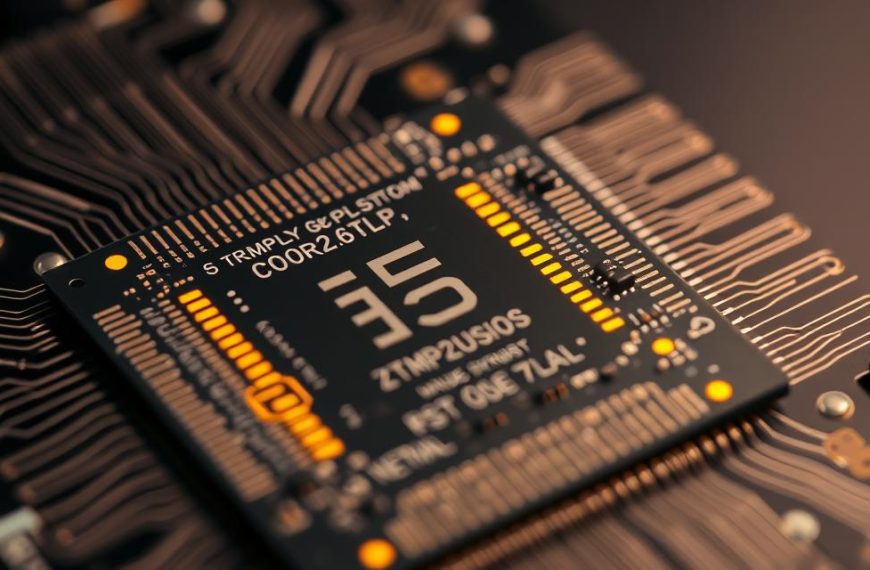Modern healthcare has been transformed by the integration of advanced technology. Electronic health records (EHRs) have replaced outdated paper-based systems, streamlining the way medical professionals manage health records. This shift has significantly reduced errors, thanks to built-in alerts and reminders that ensure accuracy.
Real-time access to patient data has improved diagnostic accuracy, enabling quicker and more informed decisions. The 2004 initiative by President Bush pushed for nationwide EHR adoption, setting the stage for a more efficient healthcare system. Additionally, the Health Insurance Portability and Accountability Act (HIPAA) ensures that patient information remains secure and confidential.
With features like problem lists and confidentiality guarantees, EHRs have become essential tools in modern patient care. They not only enhance efficiency but also foster better communication between healthcare providers, ultimately improving outcomes for patients.
The Evolution of Computer Systems in Medicine
From skepticism to reliance, technology has become a cornerstone of modern healthcare. The journey of integrating digital tools into medical care has been marked by significant milestones, each shaping the way healthcare professionals deliver services.
Early Discussions in the 1960s
In the 1960s, the idea of using computers in medicine faced resistance. Physicians were skeptical due to high costs, unreliable hardware, and concerns about losing autonomy. Early systems were slow and expensive, making them impractical for widespread use.
Advancements in the 1980s and the Birth of HL7
The 1980s brought a turning point with the development of HL7 standards. This software framework standardized clinical messaging, enabling seamless exchange of data between systems. Despite reduced IT funding due to managed care, HL7 laid the foundation for future innovations.
The 1990s: The Rise of Electronic Health Records (EHRs)
The 1990s saw the emergence of EHRs, driven by the 1991 IOM report that outlined 12 essential functions. HIPAA, enacted in 1996, ensured patient data confidentiality. While countries like Canada and Australia led in EHR adoption, the U.S. faced delays. The Internet also began enabling better communication between patients and providers.
Why Are Computer Systems Important in Medicine
Digital innovations are reshaping how medical professionals operate. From patient portals to AI-driven diagnostics, these advancements are transforming healthcare delivery. They improve efficiency, reduce errors, and enhance the overall quality of care.
Improving Patient Care Through Technology
Patient portals have revolutionized the way individuals interact with healthcare providers. These tools allow patients to check in faster, refill prescriptions, and access their health records from home. This reduces wait times and empowers patients to take control of their care.
Electronic health records (EHRs) also play a crucial role. They streamline communication between providers, ensuring that everyone involved in a patient’s care has access to the same information. This coordination leads to better outcomes and a more personalized approach to treatment.
Enhancing Diagnostic Accuracy
AI-driven diagnostics are reducing errors by analyzing patterns in medical data. These systems can identify potential issues that might be missed by human eyes. For example, caBIG has been instrumental in sharing cancer research data, leading to more accurate diagnoses and treatments.
Real-time access to patient information also allows doctors to make informed decisions quickly. This is particularly critical in emergency situations where every second counts.
Streamlining Administrative Tasks
Automated billing systems are improving revenue cycles for healthcare providers. By reducing claim rejections and automating coding, these tools save time and resources. CMS’s electronic prescription standards have further simplified processes, ensuring compliance and efficiency.
| Traditional Process | Technology-Driven Process |
|---|---|
| Manual chart retrieval | Instant access via EHRs |
| Paper-based prescriptions | Electronic prescriptions |
| Manual billing and coding | Automated billing systems |
The Role of Electronic Health Records (EHRs) in Modern Medicine
Electronic health records (EHRs) have become a cornerstone of modern healthcare. These digital systems replace outdated paper-based methods, offering a more efficient way to manage patient data. With real-time access to medical records, healthcare providers can make informed decisions quickly, improving the quality of care.
Key Functions of EHRs
EHRs are designed to streamline workflows and enhance accuracy. The Institute of Medicine (IOM) outlined essential functions, including:
- Problem lists to track patient conditions
- Audit trails for accountability
- Multi-user access for collaboration
Standards like SNOMED-CT ensure consistent clinical terminology, while HIPAA-compliant encryption safeguards data during cross-system synchronization.
Benefits of EHRs for Healthcare Providers
EHRs offer numerous advantages for healthcare providers. They improve communication between teams, ensuring everyone has access to the same patient data. This coordination leads to better outcomes and a more personalized approach to treatment.
Initiatives like caBIG enhance interoperability, especially in oncology, by integrating clinical trials management and tissue bank tools. This seamless system accelerates research and improves diagnostic accuracy.
Challenges in EHR Implementation
Despite their benefits, EHR adoption faces hurdles. High costs and staff training are significant barriers. Smaller practices often struggle with the financial burden of implementing a new system.
Additionally, ensuring data security remains a priority. The Department of Health and Human Services (DHHS) has adopted standards like LOINC and DICOM to address these concerns, promoting secure data sharing across platforms.
How Computer Systems Enhance Diagnostics
The integration of advanced tools in healthcare has revolutionized diagnostic processes. These innovations provide real-time access to critical information, enabling healthcare professionals to make informed decisions quickly. This shift has significantly improved patient outcomes and reduced errors in diagnosis.
Real-Time Data Access for Informed Decisions
Electronic health records (EHRs) play a pivotal role in diagnostics by offering instant access to lab results and treatment histories. This real-time availability speeds up treatment plans and ensures accuracy. For example, ZIP code-based analysis of treatment outcomes helps tailor care to specific patient needs.
Initiatives like caBIG have further enhanced research coordination, enabling seamless sharing of clinical trial data. This collaboration accelerates advancements in diagnostics and treatment.
Integration with Medical Devices
Medical-grade computers now interface with IoT devices for real-time monitoring. Standards like IEEE 1073 ensure interoperability between devices, creating a cohesive system for healthcare providers. This integration allows for continuous tracking of vital signs, improving diagnostic accuracy.
For instance, the NCI’s Common Toxicity Criteria standardize adverse event reporting, ensuring consistency in data collection and analysis.
Reducing Diagnostic Errors
AI algorithms are transforming diagnostics by identifying patterns that may be missed by human analysis. These tools reduce errors and enhance precision, leading to better patient outcomes. PITAC’s 2001 critique of inconsistent care quality highlighted the need for such advancements.
By leveraging AI and standardized data, healthcare providers can minimize diagnostic errors and deliver more effective treatments.
Improving Patient Care with Advanced Technology
Advanced technology is reshaping how healthcare professionals deliver patient care. From self-service portals to automated tasks, these innovations are streamlining workflows and enhancing the quality of services.
Patient Portals and Self-Service Options
Patient portals are transforming the way individuals interact with their healthcare providers. These platforms allow users to refill prescriptions, pay bills, and access medical records from home. This saves time and empowers patients to take control of their care.
Automated reminders reduce no-show rates, ensuring appointments are kept. This efficiency improves clinic operations and enhances the overall patient care experience.
Enhanced Communication Among Healthcare Teams
Electronic health records (EHRs) enable secure messaging between specialists, fostering better collaboration. Consolidated notes ensure continuity of care, allowing professionals to make informed decisions quickly.
This seamless communication reduces errors and ensures that every team member is on the same page. It’s a critical step in delivering high-quality services.
Automating Repetitive Tasks
Robotic process automation (RPA) is revolutionizing administrative tasks like claims processing. This software reduces manual effort, minimizes errors, and speeds up workflows.
Scheduling tools also prevent physician burnout by balancing workloads effectively. These innovations save time and allow healthcare providers to focus on what matters most—their patients.
The Future of Computer Systems in Medicine
The next decade promises groundbreaking advancements in healthcare technology. Emerging tools are set to redefine how hospitals operate, offering new ways to improve patient outcomes and streamline workflows. From AI-driven diagnostics to enhanced data security, the future of medicine is bright.
Emerging Technologies and Their Potential
Innovations like edge computing are transforming ICU operations by processing device data faster. This reduces delays in critical care, ensuring timely interventions. Additionally, medical software is evolving to support personalized treatment plans, leveraging predictive analytics for better results.
Blockchain trials are also underway to enhance EHR integrity. This technology ensures tamper-proof records, boosting trust in digital systems. As big data continues to grow, these advancements will play a crucial role in managing patient information securely.
The Role of Artificial Intelligence (AI)
AI is revolutionizing diagnostics and treatment. Predictive analytics powered by AI can identify patterns in patient data, enabling personalized care. For example, the FDA is setting new standards for AI/ML in diagnostics, ensuring these tools meet rigorous safety and efficacy criteria.
AI also supports professionals by automating repetitive tasks, freeing up time for patient care. This shift not only improves efficiency but also reduces burnout among healthcare workers.
Ensuring Data Security and Privacy
As technology advances, data security remains a top priority. Zero-trust models are being adopted to ensure HIPAA compliance, safeguarding sensitive patient information. These frameworks verify every access request, minimizing the risk of breaches.
With the rise of IoT devices in hospitals, secure data sharing is essential. Standards like DICOM and LOINC are helping create a unified system for health data exchange, ensuring privacy and interoperability.
Conclusion
The adoption of digital tools in healthcare has set a new standard for efficiency and accuracy. Electronic health records (EHRs) have significantly reduced errors while enhancing transparency in patient care. Their role in streamlining workflows and improving communication among providers cannot be overstated.
Medical-grade hardware remains critical for hospitals to ensure reliability and security. Practices are encouraged to adopt certified, interoperable systems to stay competitive and deliver quality care. Investing in advanced technology not only improves operational efficiency but also fosters patient loyalty.
Dr. Brailer’s 10-year vision for EHRs serves as a benchmark for progress. As healthcare continues to evolve, embracing these innovations will be key to achieving better outcomes and transforming the industry.












